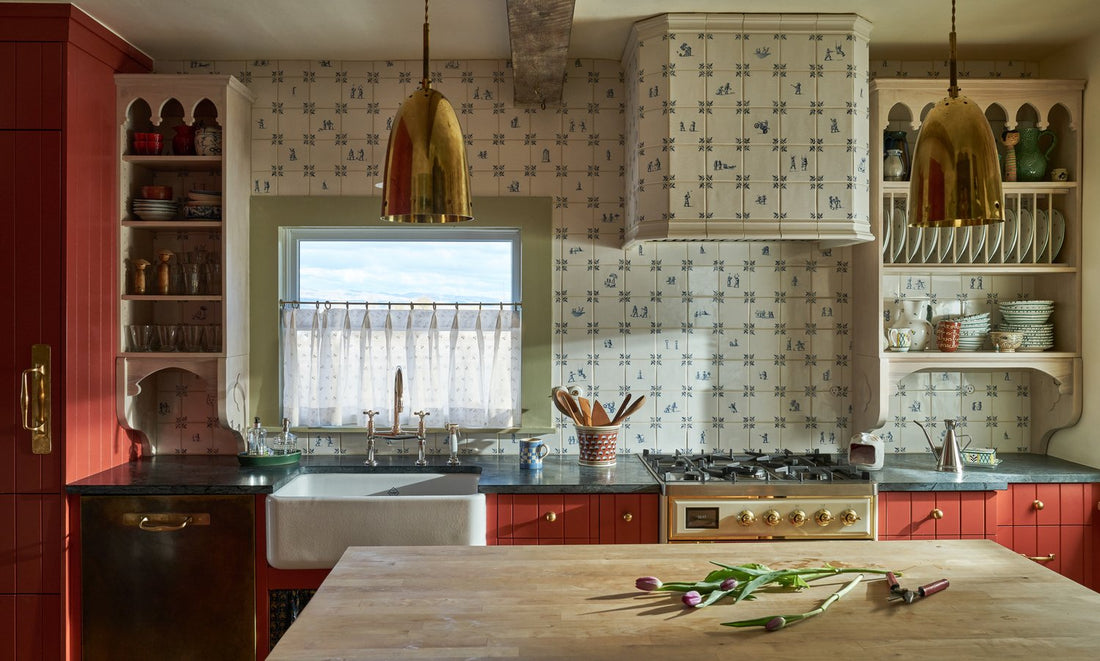
Creating a "Collected" Look That Still Feels Cohesive
(Spoiler: It's not about matching — it's about balance.)
There’s a sweet spot in decorating that lives somewhere between “everything from one catalog” and “I just moved in and unpacked every random object I’ve ever owned.” It’s called the collected look — and when done right, it makes your home feel layered, effortless, and full of personality. But here’s the catch: collected can quickly veer into chaotic without a few guardrails.
Let’s break down how to pull it off on purpose.
 image credit: Cindy Hattersly
image credit: Cindy Hattersly
Start with a clear direction (not a rigid plan)
Collected doesn’t mean random. The most successful spaces have a throughline — maybe it's a consistent color palette, a love for sculptural shapes, or a mix of vintage and natural textures. Pick a few unifying elements and let them guide your decisions, even when you’re mixing wildly different styles and eras.
Think of it like this: your room should feel like a good playlist — not every song is the same, but they all belong together.
image credit: Meta Coleman
Limit your palette (but not your personality)
You don’t need to stick to neutrals (unless you want to), but you do need a cohesive color story. Choose 2–3 dominant colors and repeat them across pieces — a mustard vase here, a rug with a gold thread there, a painting with just a touch of yellow to tie it all together.
Pro tip: Let texture do some of the talking. Worn leather, glossy ceramics, raw wood — these materials add depth without adding noise.

image credit: Will Fishel and Charlotte Freemantle
Vary shapes and scale
A common mistake with collected spaces? Too many pieces that are the same height, shape, or weight. Layer in contrast: pair a chunky wood credenza with a delicate brass lamp. Hang oversized art above a low, clean-lined bench. Put a small ceramic on a stack of large-format books.
Contrast creates rhythm. Rhythm creates flow. Flow makes your eye happy.

image credit: Future
Group objects with intention
You don’t need to display everything you own at once (your things will forgive you). Rotate pieces in and out, and group by relationship, not just type. A vintage ashtray, a modern sculptural candle, and a book on brutalist architecture? That’s a story. Three identical vases in a row? That’s a retail shelf.
Rule of thumb: Objects look better in odd numbers and when there’s a mix of height, texture, and material.

Image credit: Carpetright
Don’t be afraid of negative space
A room needs places to rest. If every surface is covered, your eye gets overwhelmed. If every wall is full, nothing stands out. Let some corners breathe. Leave a shelf half-empty. The edit is where the magic happens.
Be patient (and enjoy the hunt)
A collected look isn’t something you finish in a weekend. It takes time to find the right pieces — the ones that make you do a double take or say “you’re coming home with me.” That’s the joy of it. Your home should evolve with you.
The bottom line?
A cohesive collected look is about intention, not perfection. Trust your instincts, repeat your visual language, and let each piece earn its spot. Your home will thank you — and so will your eyeballs.
Need a head start? [Browse the shop] for curated vintage pieces that play well with others. Each one is a conversation starter, not a space filler.
- Juliette


